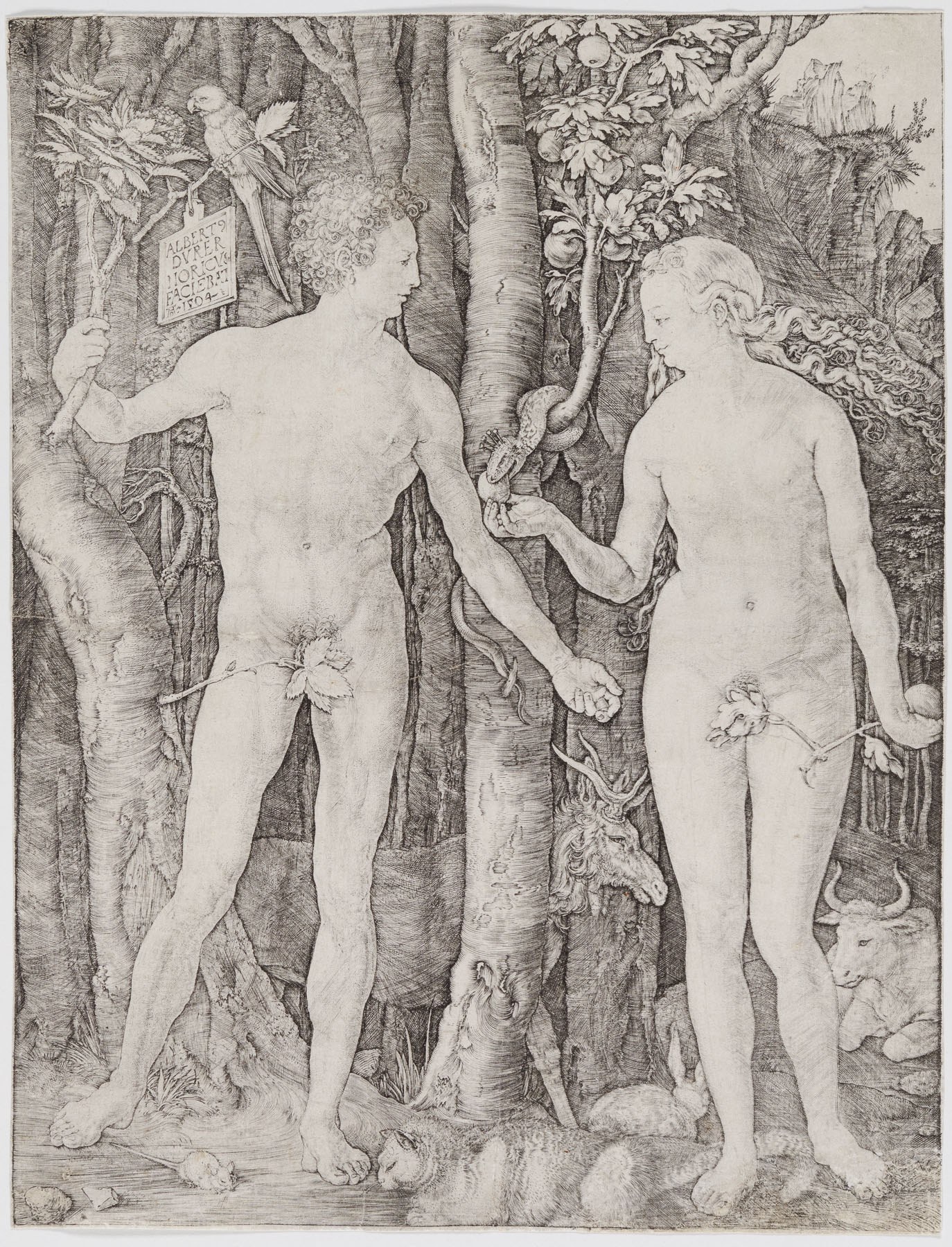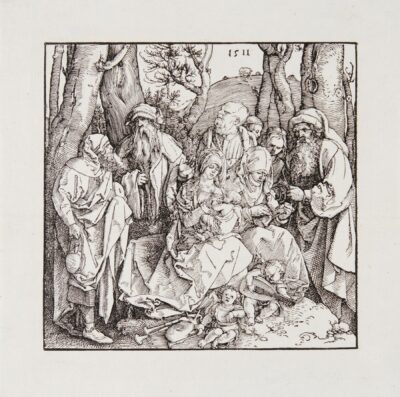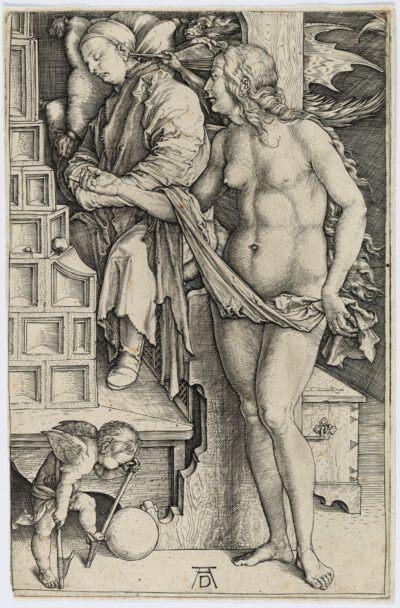Adam and Eve
Albrecht Dürer
Adam and Eve
engraving
1504
An original Albrecht Dürer engraving.
1504
Original engraving printed in black ink on laid paper bearing the “Large City Gate” watermark (Meder 263).
Signed in the plate on the tablet hanging upper left.
A fine Meder “b” impression of the third and final state (after the appearance of the split in the bark of the tree under Adam’s left arm), with strong contrasts, printed after 1550. Trimmed to the borderline on all four sides, otherwise in excellent condition.
Catalog: Bartsch 1; Dodgson 39; Panofsky 108; Hollstein 1; Meder 1.III.b; Schoch/Mende/Scherbaum 39.
This monumental engraving was mentioned in Dürer’s diary of his trip to the Netherlands, 1520-21, on three occasions. According to Zahn, the conscious application for the first time of a set of rules of proportion explains why these figures have a rigid pose, contradictory to the essence of Dürer’s concept of nature. The disagreeable impression is compensated only by the mystery of technique. Thausing asserts that “this engraving brought Dürer before the world in the full consciousness of his power, as indisputably the greatest master of the burin”; while Koehler remarks that “it is equally certain that the biblical story served the artist only as a pretext for representing the nude, both male and female, according to the best lights he then had, based on Apollo Belvedere and on Venus. Nowhere else has Dürer treated the flesh with such caressing care, using much fine dotting in the modeling, and in no previous plate has he used such a variety of textures in the conscious striving for color. It is instructive to compare this with the pure black and white of the “Virgin with the Monkey” (Bartsch 42). This Adam and Eve are quite unconscious of their nakedness, they proclaim to the peoples north of the Alps the emaciation of the flesh under the influence of the antique and its release from the curse which for fifteen hundred years had rested upon it.” Heller already noted that the animals pictured in this engraving represented the characters of man. Panofsky explains that the four temperaments of man, the sanguine, phlegmatic, choleric and melancholic, “before Adam bit into the apple had been in perfect equilibrium, he was immortal and sinless. According to Hildegard of Bingen, had man remained in Paradise he would have no noxious fluids in his body. The wise, benevolent parrot is contrasted with the diabolical serpent. Adam is holding onto a branch of mountain ash that signifies the Tree of Life to contrast it with the forbidden fig tree.”




